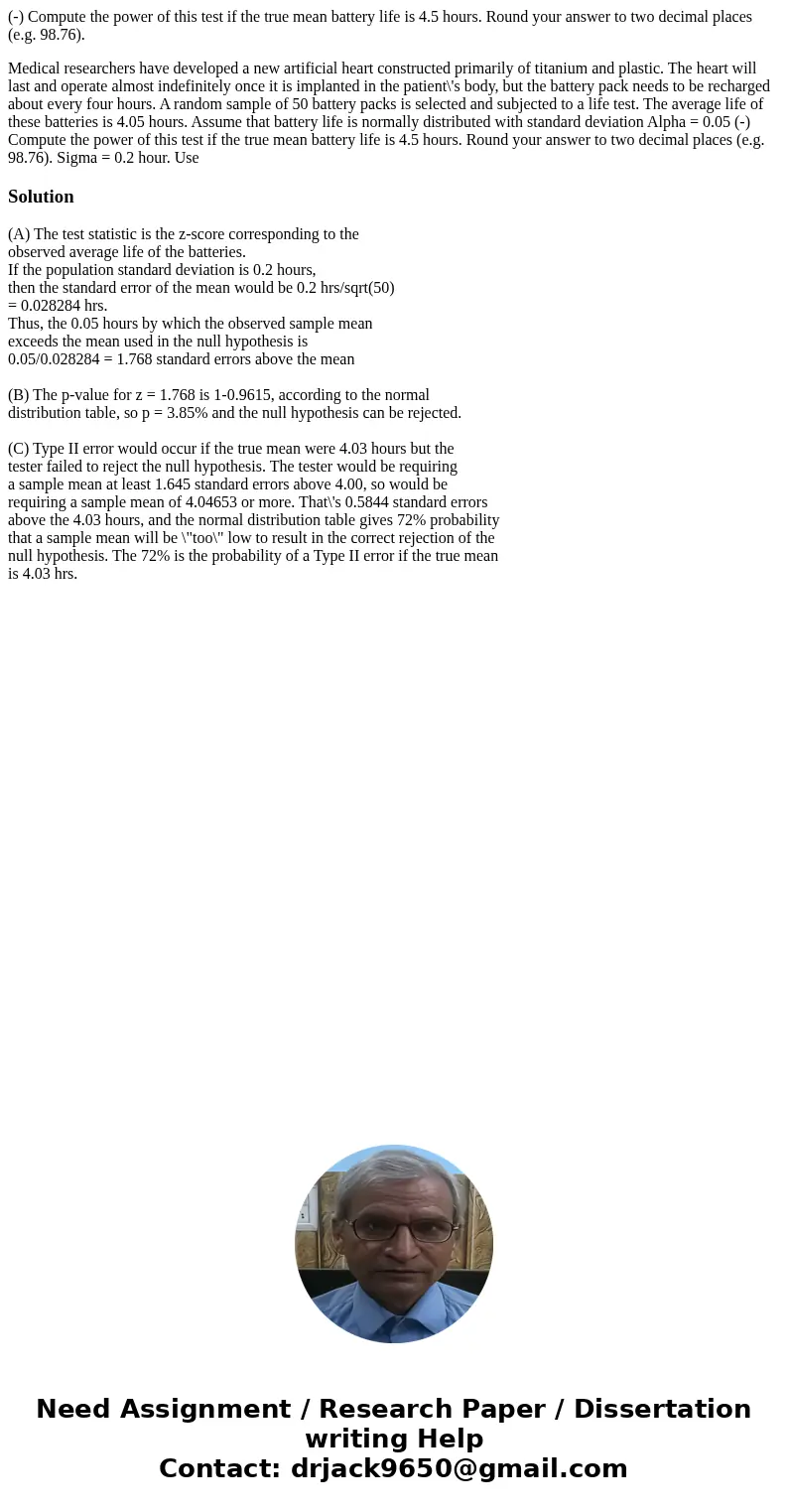Compute the power of this test if the true mean battery lif
(-) Compute the power of this test if the true mean battery life is 4.5 hours. Round your answer to two decimal places (e.g. 98.76).
Medical researchers have developed a new artificial heart constructed primarily of titanium and plastic. The heart will last and operate almost indefinitely once it is implanted in the patient\'s body, but the battery pack needs to be recharged about every four hours. A random sample of 50 battery packs is selected and subjected to a life test. The average life of these batteries is 4.05 hours. Assume that battery life is normally distributed with standard deviation Alpha = 0.05 (-) Compute the power of this test if the true mean battery life is 4.5 hours. Round your answer to two decimal places (e.g. 98.76). Sigma = 0.2 hour. UseSolution
(A) The test statistic is the z-score corresponding to the
observed average life of the batteries.
If the population standard deviation is 0.2 hours,
then the standard error of the mean would be 0.2 hrs/sqrt(50)
= 0.028284 hrs.
Thus, the 0.05 hours by which the observed sample mean
exceeds the mean used in the null hypothesis is
0.05/0.028284 = 1.768 standard errors above the mean
(B) The p-value for z = 1.768 is 1-0.9615, according to the normal
distribution table, so p = 3.85% and the null hypothesis can be rejected.
(C) Type II error would occur if the true mean were 4.03 hours but the
tester failed to reject the null hypothesis. The tester would be requiring
a sample mean at least 1.645 standard errors above 4.00, so would be
requiring a sample mean of 4.04653 or more. That\'s 0.5844 standard errors
above the 4.03 hours, and the normal distribution table gives 72% probability
that a sample mean will be \"too\" low to result in the correct rejection of the
null hypothesis. The 72% is the probability of a Type II error if the true mean
is 4.03 hrs.

 Homework Sourse
Homework Sourse